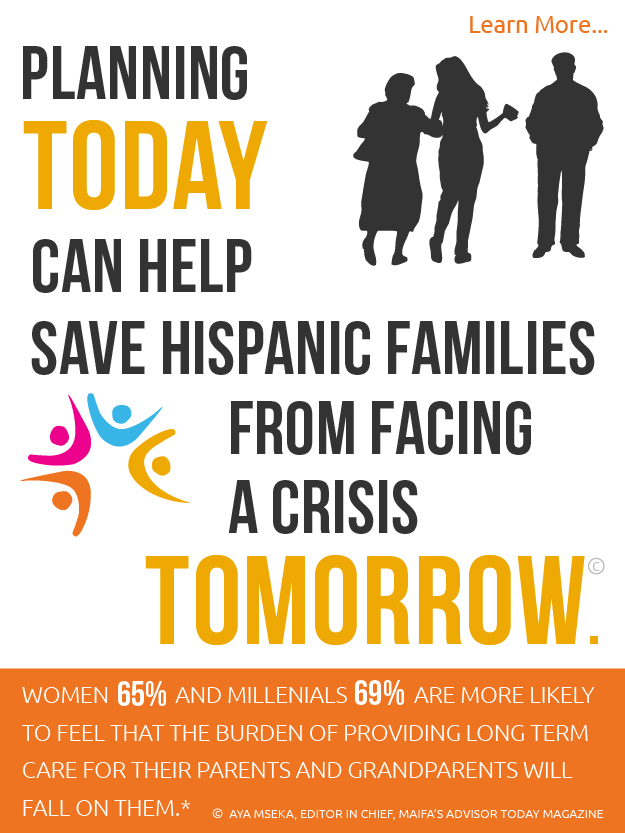
Culturally Appropriate Substance Use Disorder Treatment: CETPA’s Practical Applications for Hispanic/Latino Populations Part 2: Barriers and Solutions
11/03/2014 08:09PM | 9472 views
Part 2: Barriers and Solutions
The primary barrier for Latinos in accessing current available services for substance use disorders is language. The lack of Spanish-speaking mental health treatment providers is a major problem since close to 40% of Latinos living in this country have limited English proficiency.
Second language conversational skills are acquired in one or two years and academic language proficiency is acquired over a longer period of time of five to seven years (Ortiz, 1997). Diagnosis and treatment of mental disorders depends greatly on the ability of the patient to explain the symptoms to a clinician and understand steps for treatment. The triangulation of this critical phase through a chance interpreter, a family member and an unqualified or untrained interpreter can be devastating. However, studies reveal that there are few Spanish-speaking and Latino providers. One survey found that there were 29 Latino mental health professionals for every 100,000 Latinos in the U.S. population. For non-Latino Caucasians, the rate was 173 providers per 100,000 (Center for Mental Health Service [CMHS], 1999).
Additional organizational, systemic, and clinical barriers must also be addressed in order to provide culturally appropriate services.
Organizational barriers address the current systems of care, which include the health policies, and the people entrusted to carry them out. It is imperative that the people charged with the delivery of services include the members of this community within the ranks of its leadership, boards, staff and providers.
Systemic barriers in the structures of the health care system create major challenges for Latinos seeking addictive disease and mental health services. The operating circumstances include location, transportation, long wait times, bureaucratic intake procedures and the lack of qualified interpreters (or any interpreter services) and bilingual services.
Clinical barriers include the chronic shortage of qualified Spanish-speaking support personnel and staff. The number of bilingual/bi-cultural psychiatrists, psychologists and licensed counselors in many states is totally disproportionate to the fast growth of the Latino community including Georgia.
The absence of qualified personnel give way to ineffective and inappropriate therapies including offering services to clients who may only speak functional or conversational English. In some levels of care, it has become common practice to ask a client to bring an interpreter to the evaluation or the actual therapy session.
Even clinicians who identify themselves as Latino, speak Spanish or originate from Latin America are not necessarily culturally competent to serve this community. Socio-cultural barriers include the need for language appropriate services, acknowledges underutilization rates for addictive disease and mental health services, takes into account the patient’s level of acculturation, addresses the stigma associated with these illnesses in the Latino culture, has intimate knowledge of available resources, understands the client’s uncertainty about established educational, social, financial and medical system and respects Latino beliefs in spirits or sins as reason for illness or hardship.
Limited English Proficiency
The issue of providing services to persons with limited English proficiency (LEP) is actually addressed by the federal government under Title IV of the Civil Rights Act of 1964 which states “No person in the United States shall, on the ground of race, color, or national origin, be excluded from participation in, be denied the benefits of, or be subjected to discrimination under any program or activity receiving federal financial assistance”. [JG1] The courts have interpreted national origin to include individuals with limited English proficiency. In August 2000, President Clinton, reiterated this policy by issuing Executive Order (EO) 13166, Improving Access to Services for Persons with Limited English Proficiency, which applied to all federal agencies.
The system of care may address this issue in several different ways. It may choose to provide the very minimum level of service in order to meet the aforementioned requirements or it may choose to truly apply the research-based data and provide the highest level of service, linguistic and culturally appropriate direct services, to serve the Latino community. Not addressing this issue is unacceptable.
The ramifications of poor linguistic access include decreased access to health services, poor patient comprehension, low patient satisfaction, reduced quality of care and an increase in health care costs.
Many Latinos today are suffering in silence from addictive diseases and mental illness in part because of these barriers.
Many Latinos who receive services for these illnesses are living healthy and productive lives today thanks, in part, to the advances achieved in pharmacology and psychotherapy. Still, many who have received successful treatment choose not to share the fact that they were helped for fear of being judged or labeled negatively. Continued efforts from advocates, providers and community members is needed to deliver to the Latino community the very important message that mental illness and addiction are treatable and that there is no shame in acknowledging the fact that we have been helped.
SOLUTIONS
In order to meet the addictive disease and mental health services of the growing number of Latinos, regardless of their socio-economic, educational, linguistic and acculturation levels, major changes need to take place at all service levels.
Policy recommendations include setting as a priority the establishment of a specific programmatic focus and supporting policy framework including access and workforce development. This will reduce systemic barriers and increase the number of substance use disorders and mental health professionals who are linguistically and culturally skilled. CETPA begins recruiting at the high schools during career days. We motivate young minds to think about the counseling field. We identify those who are bilingual and sometimes are able to offer them non-clinical recovery support jobs while they attend college. Training recommendations include developing and expanding the knowledge base for educating and training current and future mental health and addiction professionals.
The most critical and enduring service delivery issue is accessibility. Efforts should be focused on creating financial and other incentives for developing systems of services/care and utilizing innovative services alternatives that meet the identified needs of the Latino community. CETPA’s hours of operation are from 9 am until 9 pm and some of our services operate on Saturday. We learned that those are the times our community can access our services. We sometimes help with bus tokens and child care. And lately we have been providing tele-counseling through a SAMHSA Health IT grant where consumers can access their counselor through a secure server for an internet based, face-to-face session from the comfort of their own home at the most appropriate time in the language they best communicate in.
Research typically drives policy, funding and system development decisions. Little information exists, and so much is needed to better understand the mental health, and addictive disease service needs of all Latinos and especially those who live in rural communities. Research must be supported and funded to make this happen.
Affordability of services is key. CETPA serves a community who is highly uninsured, underinsured and due to different types of visas or lack of legal status, are unable to be insured. CETPA has a sliding scale fee and we provide free services to those that do not have the ability to pay. We rely on foundations and donations to cover these costs. And we receive state and federal grants, and accept Medicaid and third party payers. Lately we have also begun to see adults formerly uninsured showing up with policies purchased through the Marketplace from the Affordable Care Act.
Leadership must be developed and committed to at individual and institutional levels – cultural competence must be part of the agenda and a priority for Latino leaders. CETPA would not have been able to accomplish all of this without the support of the Georgia Department of Behavioral Health and Developmental Disabilities, SAMHSA’s Center for Substance Abuse Treatment and all of the supporters we have in Georgia and throughout the nation.
The message is clear, affordable, cultural and linguistically appropriate substance use disorder and mental health counseling is achievable.
Brown, E. R., Ojeda, V. D., Wyn, R., & Levan, R. (2000). Racial and ethnic disparities in access to health insurance and health care. Los Angeles: UCLA Center for Health Policy Research and The Henry J. Kaiser Family Foundation
Brown, E. R., Wyn, R., Hongjian, W., Valenzuela, A., & Dong, L. (1999). Access to health insurance and health care for children in immigrant families. In D. J. Hernandez (Ed.), Children of immigrants. Washington, DC: National Academy of Sciences
Centers for Disease Control and Prevention. (2004). Health disparities experienced by Hispanics
United States. Morbidity and Mortality Weekly Report, 53, (40): 935-937.
U.S. Department of Health and Human Services. (2001). Mental Health: Culture, Race, and Ethnicity—A Supplement to Mental Health: A Report of the Surgeon General. Rockville, MD: U.S. Department of Health and Human Services, Substance Abuse and Mental Health Services Administration, Center for Mental Health Services.
Hanson, K. L. (2001). Patterns of insurance coverage within families with children. Health Affairs, 20, 240–246.
The Henry J. Kaiser Family Foundation. Kaiser Commission on Medicaid and the Uninsured. (2000). Health centers’ role as safety net providers for Medicaid patients and the uninsured.
Morales, L.S. et al. (1999) “Are Latinos Less Satisfied with Communication by Health Care Providers?” Journal of General Internal Medicine, 14.
United States Census Bureau. Census: Hispanic dropout numbers soar. Retrieved Oct.
10, 2002 from http://www.usatoday.com/news/nation/census/2002-10-10-censushispanic-
dropouts_x.htm.
Kleinman, A., Eisenberg , L., and Good, B. (1978) “Culture, Illness, and Care: Clinical
Lessons from Anthropologic and Cross-Cultural Research,” Annals of Internal
Medicine, 88.
Fortier, J.P. and Shaw-Taylor, Y. (1999) “Cultural and Linguistic Competence Standards
and Research Agenda Project: Part One: Recommendations for National Standards.
Resources for Cross-Cultural Health Care” Silver Springs, Md.: Office of Minority Health.
Erzinger, S. (1991) “Communication Between Spanish-Speaking Patients and Their Doctors in Medical Encounters,” Culture, Medicine and Psychiatry, 15.
Substance Abuse and Mental Health Services Administration. (2013). Results from the 2012 National Survey on Drug Use and Health: Mental Health Findings, NSDUH Series H-47, HHS Publication No. (SMA) 13-4805. Rockville, MD
M Aguirre-Molina, et. al. 2001, Health Issues in the Latino Community Wiley, John &
Sons, Inc.
Center for Substance Abuse Treatment. (2006) Addiction Counseling Competencies: The Knowledge, Skills, and Attitudes of Professional Practice. Technical Assistance Publication (TAP) Series 21. HHS Publication No. (SMA) 08-4171. Rockville, MD: Substance Abuse and Mental Health Services Administration
Gonzalez, Juan (2001). Harvest The Empire: History of Latinos in America. Penguin
Higginbotham, J. C., Trevino, F. M., & Ray, L. A. (1990). Utilization of curanderos by Mexican Americans: Prevalence and predictors. Findings from the HHANES 1982–1984. American Journal of Public Health, 80 (Suppl.), 32–35.
Risser, A.L., and Mazur, L.J. (1995). “Use of folk remedies in a Hispanic population.” Archives of Pediatric Adolescent Medicine, 149, 978-981.
Keegan, L. (1996) “Use of alternative therapies among Mexican Americans in the Texas
Rio Grande Valley.” Journal of Holistic Nursing, 14, 277-294.
Skaer, T.L., Robison, L.M., Sclar, D.A., and Harding, G.H. (1996). “Utilization of
curanderos among foreign-born Mexican American women attending migrant health
clinics.” Journal of Cultural Diversity, 3, 29-34.
Macias, E.P., and Morales, L.S. (2000). “Utilization of health care services among
adults attending a health fair in south Los Angeles County.” Journal of Community
Health, 25, 35-46.
American Psychiatric Association: Diagnostic and Statistical Manual of Mental Disorders, Fifth Edition. Arlington, VA, American Psychiatric Association, 2013. Web. [access date: 1 June 2013]. dsm.psychiatryonline.org
Ortiz, AA (1997). Learning Disabilities Occurring Concomitantly with Linguistic Differences Journal of Learning Disabilities. May/June 1997
Table 1.
Georgia Department of Behavioral Health and Developmental Disabilities, FY12 Utilization of Community Services per 1000 population By Disability Program & Ethnicity. 2014
[JG1]Not listed in references
[JG2]Please make sure that all of your references are complete and properly formatted in the APA style.











Post your Comment
Please login or sign up to comment
Comments